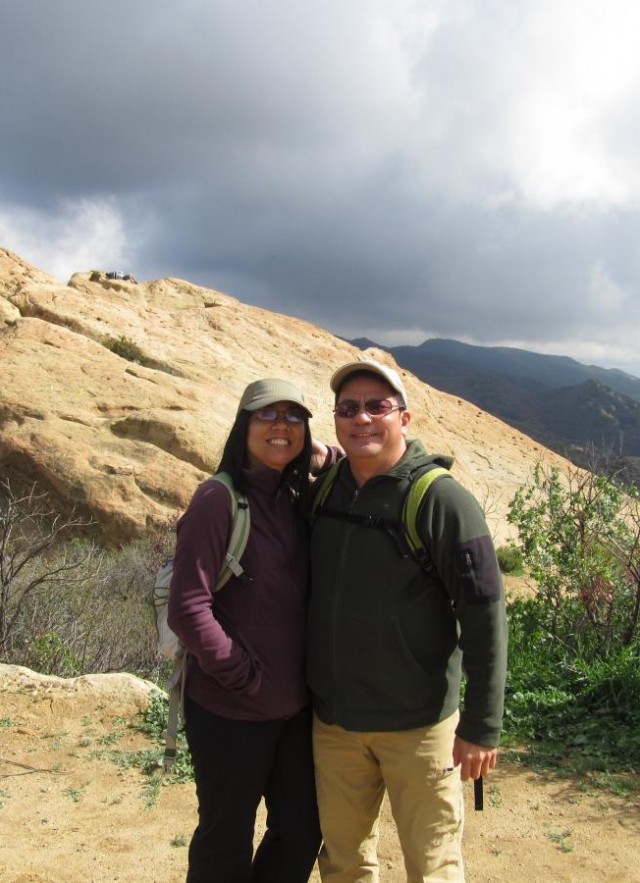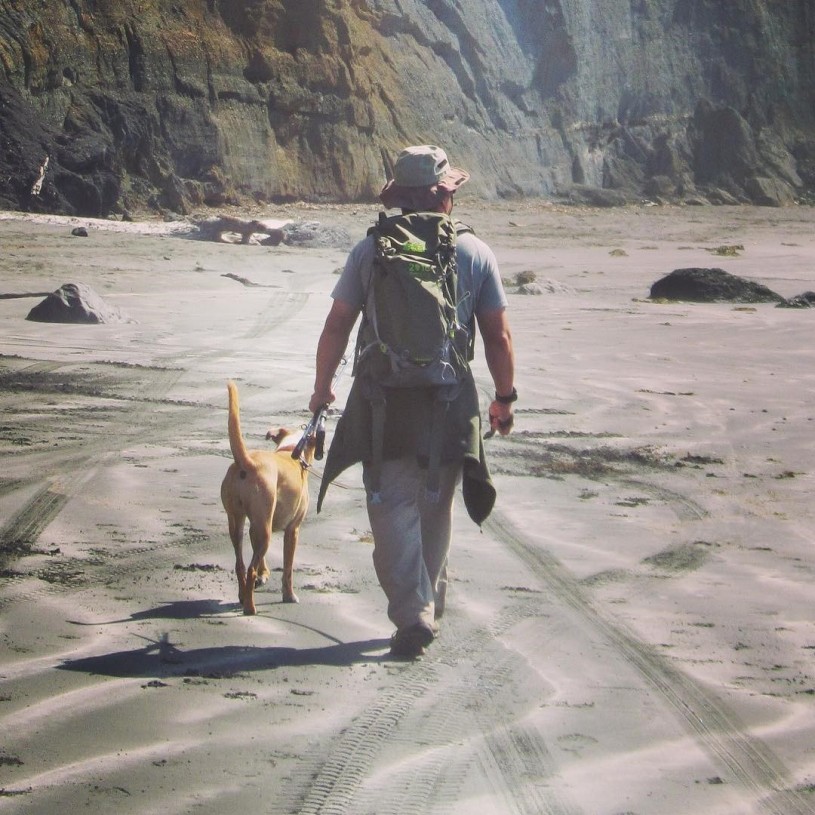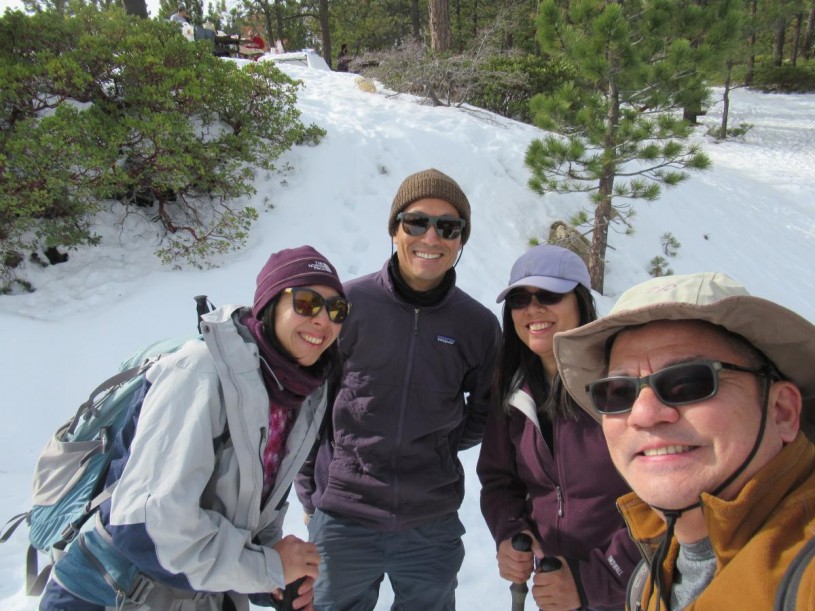Voices of L.A. Nature: An Interview with Dennis Arguelles
Welcome to our new series, "Voices of L.A. Nature," where we'll hear stories from a diverse range of Angelenos about their relationships with nature in L.A.

Published May 14, 2019
Welcome to our new series, "Voices of L.A. Nature," where we'll hear stories from a diverse range of Angelenos about their relationships with nature in L.A. This month we're celebrating Asian Pacific Heritage month, with two interviews from the community. Stay tuned throughout the year, for more Voices of L.A. Nature!
Dennis Arguelles is a National Parks Conservation Association Program Manager, who rates himself as a 10/10 on the "I love nature scale." His family emigrated from the Philippines to Montreal, Canada in the '60s where he was born. They then moved to Southern California in the '70s, and Dennis grew up in San Gabriel Valley. From the SGV Dennbis was able to explore the San Gabriel Mountians at a young age. This paired with family road trips to various national parks helped Dennis develop a deep connection to wildlife and the outdoors. Today Dennis incorporates nature into his daily life by hiking his local trails, and watching pollinators visit the native plants he has put in his yard.
Can you tell us a little bit about your job/career?
I am the Los Angeles Program Manager for the National Parks Conservation Association (NPCA). We are an independent voice for our national parks; working to protect them from threats, expand them where appropriate and fighting for adequate funding for the National Park Service. In Southern California, we monitor parks from the Channel Islands to San Diego, are working to expand the Santa Monica Mountains National Recreation Area, and to establish a Cesar Chavez National Historic Park. We do this by engaging local policy makers and building public support for our parks.

Do you incorporate nature into your daily life? In what ways/why?
YES! I believe a connection to nature is critical to living a balanced life, reducing stress, and making us more adaptable, confident, and self-aware. Several times a week I hike in the foothills and trails near my home, and I spend most of my free time traveling locally and abroad to national parks, mountains, rainforests, coastlines, deserts -- anywhere I can get into nature. I believe a relationship to animals is important too, so I have a dog that often joins me on my hikes and road trips. Finally, I just bought some native plants for my patio. They’re already attracting pollinators and I can’t wait to get more!
Can you share a memory/story of where and how you played as a kid?
From an early age my Dad took me on all kinds of fishing trips. Sometimes it was to a remote beach to do some surf fishing, others times to a local lake, and sometimes we’d head out on a sportfishing boat. I remember getting up at ungodly hours, being cold and wet a lot (not to mention stinky) and always getting stuck by fish hooks. But I also remember loving every minute of it! Sometimes trips would include special treats like spotting a pod of porpoises or whales, or watching a raptor grab a fish off the top of a lake. These are some of my favorite memories.
What nature places did you explore/experience as a kid in L.A.?
I grew up in the San Gabriel Valley, and thanks to school programs, the scouts and other activities I was exposed the San Gabriel Mountains. I was also privileged to be able to go on family road trips to national parks like the Redwoods, Grand Canyon and Yosemite.
How has you love of nature changed over time?
My awareness of the importance of having a connection to nature has changed over time. From an early age I loved playing in the dirt, collecting bugs and going on fishing trips with my Dad, so I guess you can say I’ve always loved nature. But as an adult backpacking, mountaineering, kayaking, and other activities eventually inspired me to pursue a career in conservation.
What is your favorite nature space to visit in L.A.? What do you do there, and why do you go?
The top of Mt. San Antonio (Baldy) is probably my favorite spot. I try to hike it a few times a year to stay in shape, but mostly because it helps me escape the urban and digital world, if only for a day or so. It’s amazing that less than a couple hours from Downtown L.A. you can get on a trail leading to a wild, alpine peak just over 10,000 ft. It’s one of Southern California’s true treasures.
What is your favourite plant/animal/fungus/slime mold/other organism in Los Angeles?
I love seeing rattlesnakes on the trail. Every time I post photos of them on social media it seems to freak out a lot of folks. I believe it’s a privilege to live near them. They remind us to respect nature and that we have to share the landscape. I just make sure to give them a wide berth whenever I come across them.

Do you have a funny story about a nature experience you had in L.A.?
I lost my camera on a trail in the San Bernardino Mountains once. Luckily, some other hikers found it and gave it back to me at the trailhead. Later on, I realized they took all kinds of funny photos of themselves with it. I sent the woman who found it an REI gift card because I was so amused.
You recently attended the Zócolo event, Is Nature Only for White People? What did you think about the event and what were your biggest takeaways?
I thought it was a great mix of speakers on an issue of particular concern to me personally and professionally. I always lament how few people of color I see on the trail, especially in the backcountry, or when visiting a national park, forest, preserve, etc. But I was inspired to hear from individuals addressing the issue from different angles.
The recent Atlantic article, Five Ways to Make the Outdoors More Inclusive, laid out some concrete steps that National Parks and public lands can employ to become more inclusive. What do you think about the process, the team, and the recommendations?
I think it’s a great report and the team is top-notch. It lays out clearly and succinctly what steps we can all take to help diversify the outdoors. At NPCA we’re going through our own process of understanding and incorporating principles of justice, equity, diversity and inclusion into our work and what they mean to a healthy, accessible, and democratic national park system, so I was particularly inspired by the effort.
How do you think we can make access to nature in L.A. more accessible for everyone? What are some of the biggest barriers?
We need to think about access to nature, the outdoors, and outdoor recreation as right, not a privilege. Unfortunately, there are just too few resources that help folks, particularly in underserved communities, get into our parks, public lands, and natural spaces. The National Park Service (NPS) has a role to play, and is already doing great work in neighborhoods like Highland Park, where they help support programs at the Audubon Center at Debs Park. At NPCA we’re working to build on this through our “Rim of the Valley” campaign to expand the boundaries of the Santa Monica Mountains National Recreation Area. The expansion would help protect natural resources and historic sites from the Simi Valley to Pacoima to Downtown L.A.. It would also increase the range within which the National Park Service (NPS) can operate, which would expand its ability to engage local communities, work with schools and youth, and provide interpretive and educational programs.
Follow Dennis and his work on social media:
Rim of the Valley campaign on Twitter: @ROTVCoalition
Instagram: @dennisonthetrail